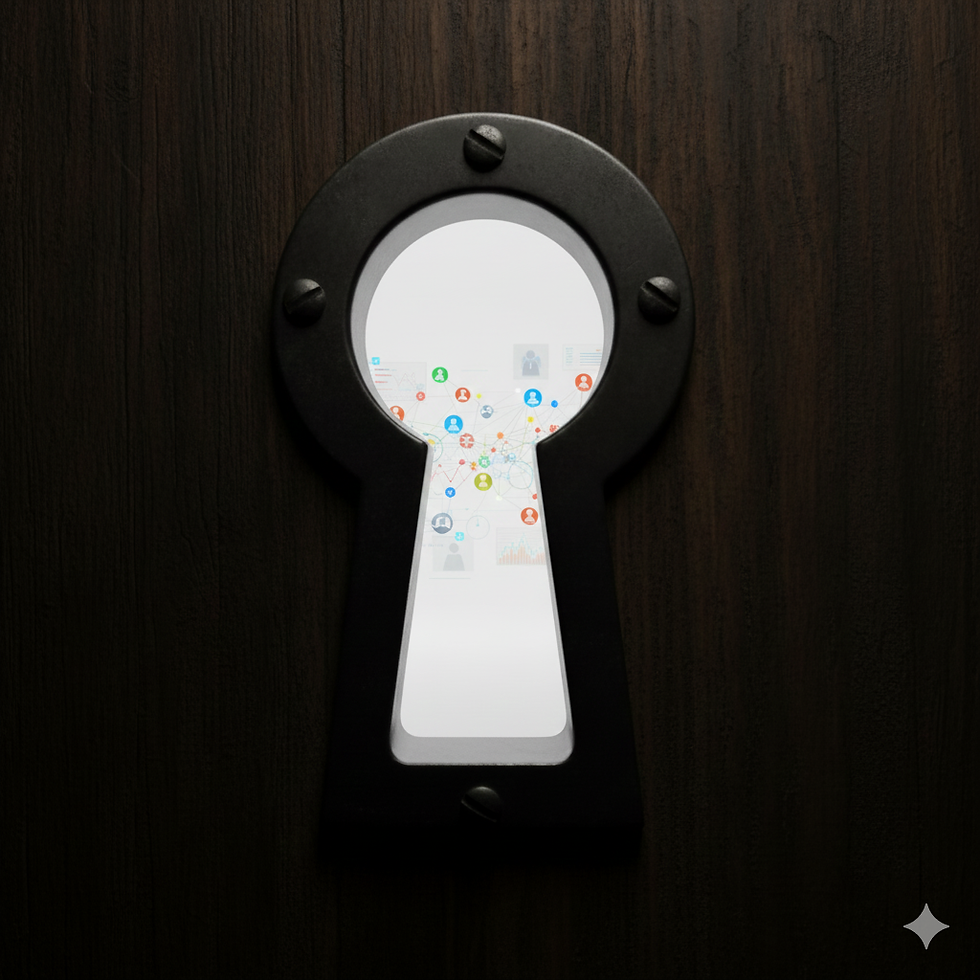
AI & UXR
Being Nice Helps - Not Only With People, but Also With AI
5
MIN
Oct 28, 2024
Politeness - a word we know well from our daily interactions. We know that a respectful tone in human interaction makes many things easier. But what about when you're not talking to a human, but to an AI like ChatGPT? Is it worth being polite here too, or does it make no difference at all? And if it makes a difference, why? What follows is a deeper insight into the world of AI communication and the question of how politeness influences the quality of responses and the course of the conversation. In the end, we will see that even in the digital world, a friendly tone really does make a difference.
Politeness as the key to clearer questions
Let's start with the question: What actually happens when we communicate politely? According to Brown and Levinson's (1987) model of communication, in which ‘politeness’ is considered a universal principle in language, a polite tone of voice leads us to make our communication clearer, more complete and more considerate. These assumptions also apply when interacting with AI such as ChatGPT. Here, politeness can indirectly have a positive influence on the quality of answers - namely through the clarity of the question.
Polite questions tend to provide more context, which makes it easier for ChatGPT to understand the user's intention. For example, the question ‘Could you please help me understand the key drivers of business growth?’ is polite but also structured. It gives a clear topic (‘business growth’) and lets ChatGPT know that a detailed answer is expected. This increases the chance of providing a precise answer that meets expectations.
When brevity and directness are better - and why they don't always have to be rude
Sometimes ‘directness’ is helpful - and is often confused with rudeness. Grice's Cooperation Principle (1975) emphasises the importance of making the message as clear as possible. In certain situations where time or efficiency is a priority, it can be useful to ask very briefly and directly: ‘List the top 5 reasons for X.’ Such clear questions quickly lead to a concise answer and avoid unnecessary complexity.
This brevity can be more effective, especially if no additional clarification is required or the question is unambiguous. An example of this would be quick research during a meeting or when only facts are needed. This is less about ‘rudeness’ and more about the deliberate use of clear communication. It is important to remember that such wording should not be aggressive. The intention is still to communicate efficiently, not impolitely.
The influence of a respectful attitude on dialogue
However, a respectful and polite attitude towards the dialogue partner, whether human or machine, can lead to better results in many ways. Here are some important aspects that show how politeness improves dialogue with ChatGPT:
More context and details lead to better answers
A polite question often contains more background information, e.g. ‘I'm currently working on a project about sustainability. Could you help me identify the most important environmental factors?’ Such questions show that the questioner is willing to provide more context. Carver & Scheier (1981) show that detailed information in feedback loops leads to better and more relevant answers.
Openness to questions and a dynamic dialogue
As Goffman (1967) puts it: communication is a social ritual. Polite communication promotes a dialogue in which the user is more willing to ask further questions, clarify ambiguities or give feedback if an answer does not meet expectations. This makes the entire interaction more dynamic and purposeful.
Clear structuring of questions
A willingness to keep your communication clear and structured is at the heart of politeness. Tannen (1990) argues that men and women have different communication styles, but in both cases a well-structured question elicits better responses. A clear structure of the enquiry helps to set the focus: What is the topic? Which details are important? And what is the desired goal?
Constructive feedback promotes precision
Even though ChatGPT responds to all forms of feedback, constructive criticism in a polite setting is often more effective. If a user says ‘I don't quite understand, could you explain that again?’, this is an invitation to a better exchange. As Berger & Calabrese (1975) found, positive interaction encourages a willingness to clarify further and leads to more precise answers.
Avoiding misunderstandings
Misunderstandings often arise from unclear or incomplete questions. Polite communication shows that the questioner is making an effort to express themselves clearly. This leads to better results, as misunderstandings are directly reduced.
Greater interest and engagement in the conversation
Those who ask politely often show a genuine interest in the progress of the conversation. This means that polite questioners are more likely to take the time to respond to answers, ask further questions and thus realise the full potential of the interaction with ChatGPT. This leads to a more intensive exchange and more detailed answers.
When politeness improves communication the most
Politeness therefore brings added value above all when it comes to complex or in-depth topics where clear dialogue and detailed information are important. In such cases, a friendly and respectful attitude creates the basis for constructive conversations that lead to the best and most accurate answers.
Even if there are situations where directness makes sense - such as when under time pressure or when clearly formulated factual questions are asked - polite and respectful communication remains the key to an optimal conversation with ChatGPT. It is the way we communicate that makes the difference: a clear, precise and open attitude leads to a better exchange and a more valuable response.
Conclusion: politeness pays off!
Politeness is not only a social norm, but also a communication tool that improves both human and AI interactions. It helps to formulate questions more clearly, provide details and engage in dialogue to get the most out of ChatGPT. Whether discussing complex topics or quickly gathering information, a friendly tone not only creates a pleasant atmosphere, but also ensures that answers are precise and relevant.
In a nutshell: politeness is important - not only when talking to people, but also when talking to ChatGPT. A friendly, clear tone is the key to successful answers and a successful conversation.
Sources and further information:
Kommunikationstheorie und Höflichkeit: Brown, P., & Levinson, S. C. (1987). Politeness: Some Universals in Language Usage. Cambridge University Press. Diese Arbeit gilt als eine der einflussreichsten Studien zur Höflichkeit und untersucht, wie Höflichkeitsstrategien in verschiedenen Kulturen verwendet werden.
Soziale Interaktionen und Gesprächsführung: Goffman, E. (1967). Interaction Ritual: Essays in Face-to-Face Behavior. Aldine Publishing. Goffmans Arbeiten liefern eine wichtige Grundlage zum Verständnis sozialer Interaktionen und der Rolle von "Face" (Gesichtsverlust / Gesichtsgewinn) in Gesprächen. Und: Grice, H. P. (1975). "Logic and Conversation". In Syntax and Semantics. Grice beschreibt die sogenannten "Konversationsmaximen", die oft als Grundlage für kooperative Kommunikation gesehen werden.
Sprachpsychologie und Verhalten: Tannen, D. (1990). You Just Don't Understand: Women and Men in Conversation. Ballantine Books. Diese Arbeit befasst sich mit unterschiedlichen Kommunikationsstilen und zeigt, wie Sprache das Verhalten und die Beziehung zwischen Menschen beeinflusst.
Qualität von Fragen und Dialogen: Berger, C. R., & Calabrese, R. J. (1975). "Some Explorations in Initial Interaction and Beyond: Toward a Developmental Theory of Interpersonal Communication". Human Communication Research. Diese Studie beschreibt, wie Fragen in Gesprächen dazu beitragen können, Unsicherheiten zu reduzieren und die Qualität von Interaktionen zu verbessern.
Psychologie des Feedbacks und Interaktion: Carver, C. S., & Scheier, M. F. (1981). Attention and Self-Regulation: A Control-Theory Approach to Human Behavior. Springer-Verlag. Diese Arbeit beschäftigt sich mit Feedback-Schleifen in Interaktionen und der Art und Weise, wie Menschen auf Rückmeldungen reagieren.
RELATED ARTICLES YOU MIGHT ENJOY
AUTHOR
Tara Bosenick
Tara has been active as a UX specialist since 1999 and has helped to establish and shape the industry in Germany on the agency side. She specialises in the development of new UX methods, the quantification of UX and the introduction of UX in companies.
At the same time, she has always been interested in developing a corporate culture in her companies that is as ‘cool’ as possible, in which fun, performance, team spirit and customer success are interlinked. She has therefore been supporting managers and companies on the path to more New Work / agility and a better employee experience for several years.
She is one of the leading voices in the UX, CX and Employee Experience industry.














.png)






